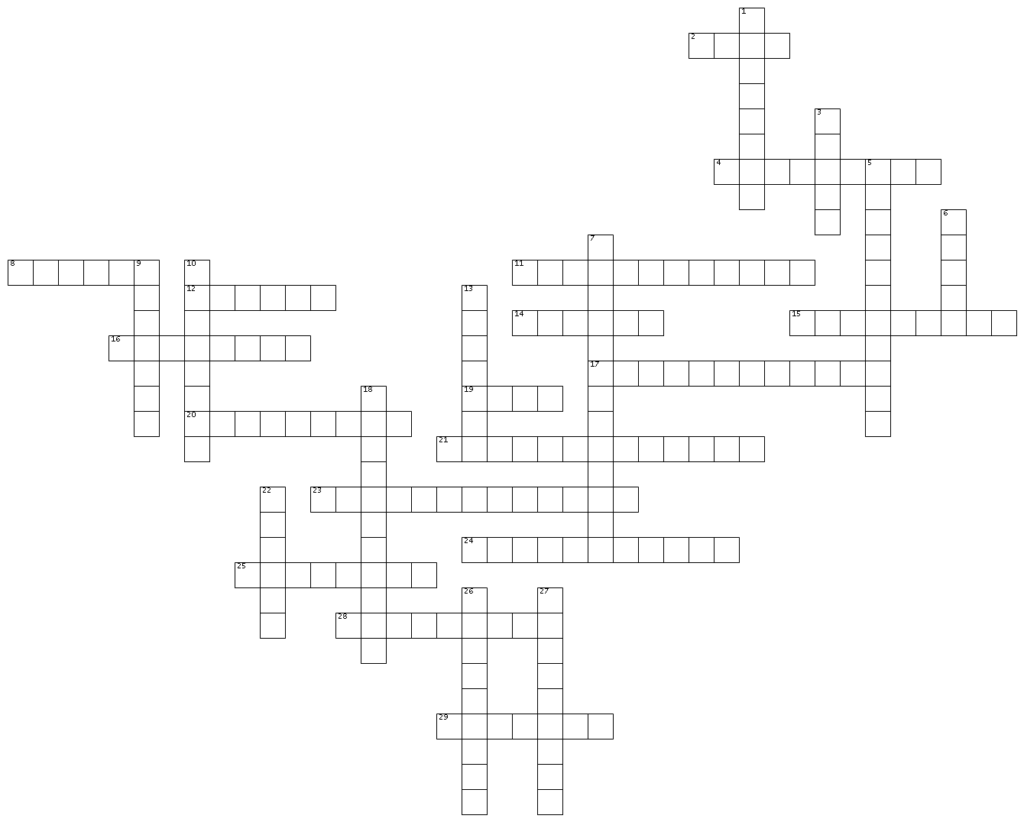NS ePrep Course – Life Science
Crossword Puzzle
Animals Invertebrates

ACROSS
2. respiratory organ that exchanges gases with fluid around it.
4. invertebrate with jointed legs and a hard exoskeleton that is periodically molted.
8. dome-shaped cnidarian body plan with the mouth on the lower surface. Jellies are examples.
11. animal that does not have a backbone.
12. a fluid-filled cavity between the gut and body wall that is lined by tissue derived from mesoderm; the main body cavity of most animals.
14. multicelled heterotroph with unwalled cells. Most ingest food and are motile during at least part of the life cycle.
15. mollusk in which the lower body is a broad “foot.”
16. middle tissue layer of a three-layered animal embryo.
17. fluid-filled cavity between the gut and body wall; partially lined by tissue derived from mesoderm.
19. respiratory organ that exchanges gases with the air.
20. cylindrical worm with a pseudocoelom.
21. lineage of bilateral animals in which the second opening on the embryo surface develops into a mouth.
23. dramatic remodeling of body form during the transition from larva to adult.
24. hard external parts that muscles attach to and move.
25. innermost tissue layer of an animal embryo.
28. radially symmetrical invertebrate with two-tissue layers; uses tentacles with stinging cells to capture food.
29. most diverse arthropod group; members have six legs, two antennae, and, in some groups, wings.
DOWN
1. bilaterally symmetrical invertebrate with organs but no body cavity; for example, a planarian or tapeworm.
3. in some animal life cycles, a sexually immature form that differs from the adult in its body plan.
5. lineage of bilateral animals in which the first opening on the embryo surface develops into a mouth.
6. cylindrical cnidarian body plan with the mouth on the upper surface. Sea anemones are examples.
7. individual animal that makes both eggs and sperm.
9. segmented worm with a coelom, tubular digestive tract, and closed circulatory system; a polychaete, oligocheate, or leech.
10. outermost tissue layer of an animal embryo.
13. mollusk with a hinged, two-part shell.
18. mostly marine arthropods with a calcium-hardened cuticle and two pairs of antennae; for example, lobsters, crabs, krill, and barnacles.
22. aquatic invertebrate that has no tissues or organs and filters food from the water.
26. land-dwelling arthropods with no antennae and four pairs of walking legs; spiders, scorpions, mites, and ticks.
27. stinging cell unique to cnidarians.